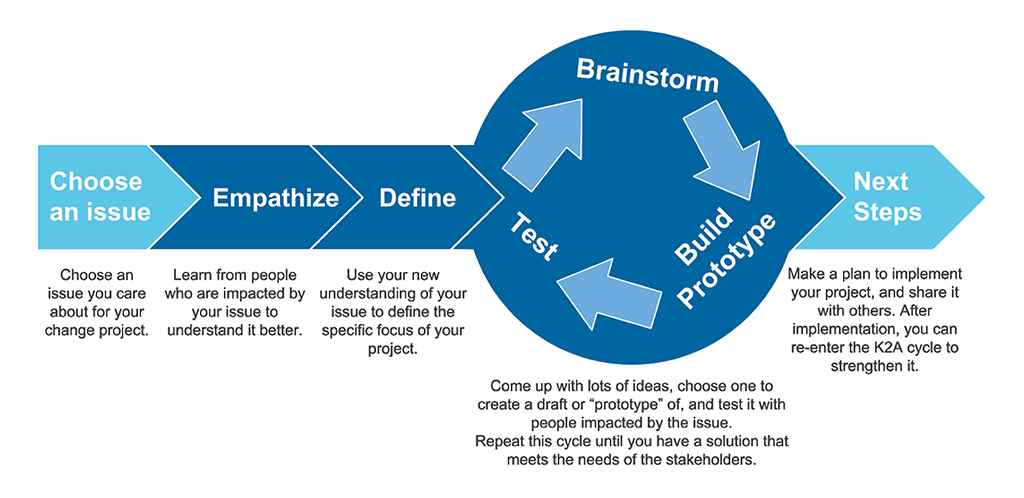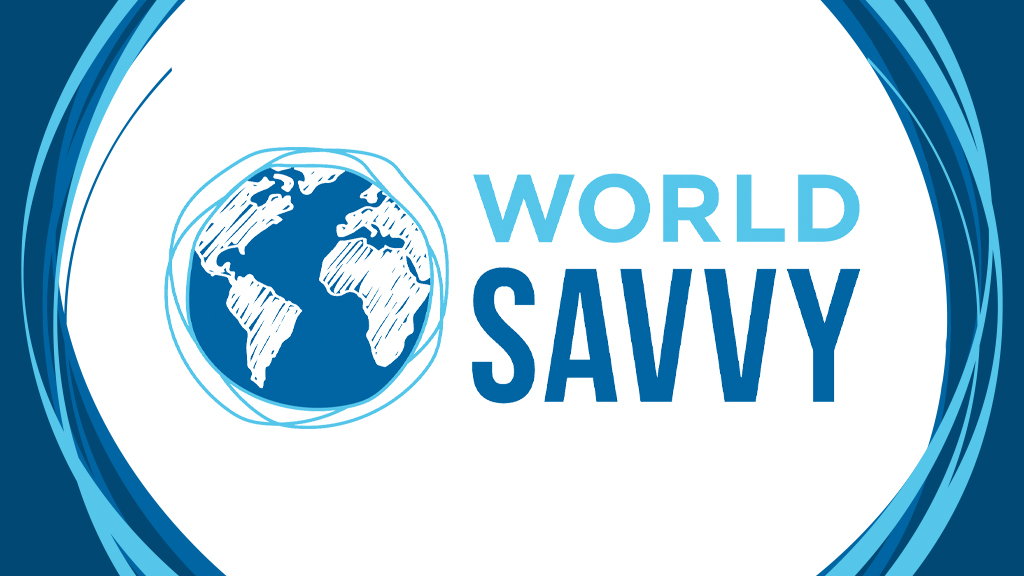Brief
Empathy in Action
Bringing Design Thinking to Life
World Savvy fosters inclusion, inquiry, and understanding to develop a new generation of empathetic and engaged global citizens. One of the core ways we achieve this is through our Knowledge to Action (K2A) process, a design thinking–based approach that supports students as they build deep content knowledge around issues of importance to them and their communities, and take action to propose solutions to said issues.

Having gained popularity across fields in the last decade or more, design thinking has more recently become increasingly used in the K–12 learning space. Put simply, design thinking is an approach to creative problem-solving. There are a variety of frameworks associated with design thinking, but most follow similar steps:
- Empathize
- Define
- Ideate
- Prototype
- Test
Arguably, the most important step in the process, and one that can easily be overlooked or underemphasized, is that of empathize—to understand and share another person’s emotions and experiences.
From a design perspective, the empathizing stage is integral for two key reasons. First, it allows the designer to build an understanding of the issue from the perspective of the stakeholders who are most impacted. Ideally, these stakeholders would be involved in the entire process, creating a scenario where the designers are creating “with,” rather than simply designing “for.” Second, it promotes an examination of bias and power dynamics on the part of the designer. We bring bias to every situation we encounter, and the design process, if not carefully thought through, can reproduce power structures. Being deliberate about seeking out the voices and perspectives of stakeholders provides an opportunity to reflect on these elements and examine their influence on the design process. Not placing enough emphasis on the empathy stage, or ignoring it completely, will result in an understanding of an issue that just skims the surface and a solution that does not meet the needs of all users.
Empathy can be fostered in a number of ways, including interviews, active listening, observation, immersion, and personal stories. A designer working on a project to build a new bridge might observe stakeholders using the current bridge or interview stakeholders about what works in the current bridge and what does not. A group of students researching food deserts in their local community might do a community walk to collect data on available food options or interview grocery store owners and the people who live in the food desert about their experiences.
In a World Savvy classroom, we support in a variety of ways educators embedding opportunities to develop empathy. Interview and observation skills can be taught alongside synthesis and analysis skills. An empathy map, for example, can be used to help students collect and unpack information gathered. Case studies provide a curated set of resources about a local or global issue. Case studies purposefully begin with personal stories, so students are able to hear directly from stakeholders impacted by a particular issue. This is often used as a launching point for the K2A process—providing students an entry point to a broader issue of interest.
Regardless of how it is incorporated, empathy is at the core of learning experiences in a K2A approach, enhancing the both the learning of students and the depth of the change they aim to make.
Read more about World Savvy’s Knowledge to Action process in other briefs in this issue, “Taking Action in STEM Learning” and “Prototyping Builds Resiliency.”
Mallory Tuominen (mallory@worldsavvy.org) is director of professional learning at World Savvy in Minneapolis, Minnesota.
Engineering Inquiry Teacher Preparation Teaching Strategies Middle School Elementary High School Informal Education



